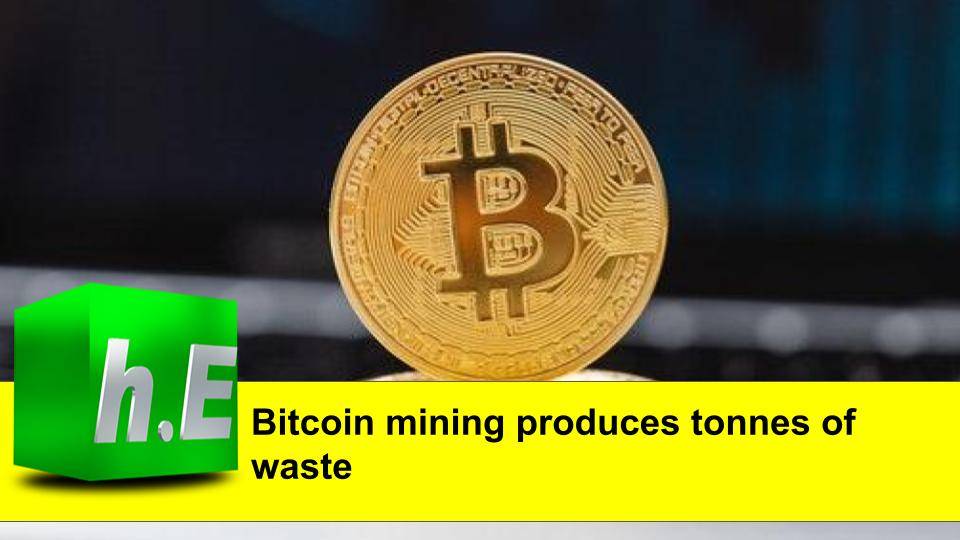Bitcoin mining generates as much as 30.7 metric kilotonnes of e-waste every year as of May 2021 which is comparable to small IT equipment waste produced by countries like the Netherlands, a new study revealed.
According to a new study by Science Direct, at peak Bitcoin price levels seen early in 2021, the annual amount of e-waste may grow beyond 64.4 metric kilotonnes in the midterm, which highlights the dynamic trend if the Bitcoin price rises further.
“E-waste represents a growing threat to our environment, from toxic chemicals and heavy metals leaching into soils, to air and water pollution caused by improper recycling,” said the study.
Divided by the average number of bitcoin transactions, that means just two transactions create as much waste as a disposed of iPad, said Alex de Vries, a cryptocurrency economist, and the study’s lead author reports Quartz.
This mining system had also created pressures miners to run only the latest, fastest, most energy-efficiency computer chips and discard older ones.
Efficiency drive
As electricity is a key cost for Bitcoin miners, they have sought out ever more efficient processors.
That has seen a move to highly specialized chips called Application-specific Integrated Circuits (ASICs).
But ASICs are so specialized that as they become obsolete, they cannot be “repurposed for another task or even another type of cryptocurrency mining algorithm”, the researchers write.
But while the chips can’t be reused, much of the weight of Bitcoin mining equipment is made up of components such as “metal casings and aluminum heat-sinks” which could be recycled.
Globally just over 17% of all e-waste is recycled. However, the number is probably less in some of the countries in which most miners are based, where in many cases regulations on e-waste are also poor.
Chip shortage
Many industries are struggling with a global chip shortage.
In addition to producing large amounts of e-waste, the researchers argue that “rapidly cycling through millions of mining devices may disrupt the global supply chain of various other electronic devices”.

They suggest that one solution to the problem of e-waste would be for Bitcoin to change the way transactions are verified, to a different less computing-intensive system.
How to reduce bitcoin’s e-waste footprint
E-waste is the world’s fastest-growing waste stream, up 21% between 2014 and 2019 to 53.6 million metric tons, according to the United Nations. Less than one-fifth of that is recycled, and many of the metals and chemicals contained in e-waste are harmful to human health. Bitcoin’s growing appetite for new hardware is also contributing to the global shortage of semiconductor chips, de Vries said.
The solution to bitcoin’s e-waste footprint is the same as that of its carbon footprint: A new approach to mining that isn’t based on the idea of bigger-is-better. Ether, a competitor to bitcoin, is on the cusp of transitioning to a new mining method called proof-of-stake which is far more energy-efficient than the proof-of-work principle used by bitcoin and can be performed on regular computers. If bitcoin made a similar switch, it could dramatically cut its e-waste—but as long as prices as rising, it’s unlikely miners will want to rock the boat.
We have always emphasized the importance of having a good website for your company because it can act as your best tool for marketing and sales. A poorly designed website can repulse people from your business and can cause you to lose customers before you even have them. Get in touch with HyperEffects to work on creating, enhancing, and making the website of your company more user-friendly.

